Description of lemesite and its scope

Lemezite is a natural stone in demand in construction. From the material in this article, you will learn what it is, what it is, where it is used. In addition, we will cover the highlights of its styling.
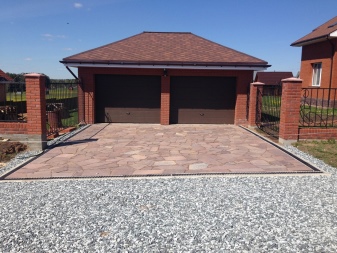

What it is?
Lemesite is a sedimentary rock with a unique molecular structure. It is a natural burgundy stone in the form of a flat slab of any shape. It is characterized by a rough surface type and ragged edges. On average, its thickness ranges from 1 to 5 cm.
Natural stone belongs to limestone rocks. Its age can be estimated at millions of years. The stone is named after the nearby Lemeza River, located in Bashkortostan. Today it is mined in the Urals.
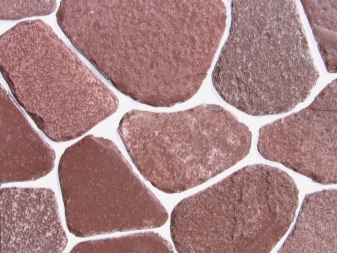
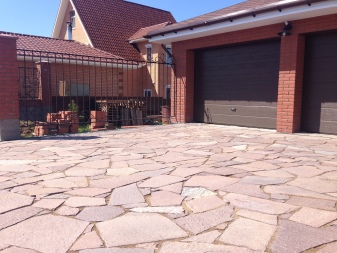
Lemesite was formed from fossilized columnar algae of various diameters. The pattern of the mineral is related to the direction of the cut. This may be a cross-section of algae with a rounded cross-section with clearly visible annual rings and spots. In addition, the cut can be longitudinal, while the pattern consists of stripes and arched lines.
The mineral has a high-density homogeneous fine-grained structure. It may contain fossilized algae, insects, skeletons of marine life (unicellular organisms, fish).
The stone contains sand, dolomites, stromatolites, limestone, clay impurities.
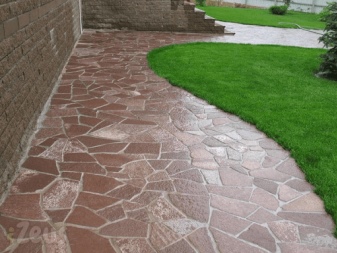

Natural fossil belongs to rare stone structures. The formation of the mineral occurs predominantly on the seabed. Its formation takes place without access to air during a chemical reaction with components of sea water.
Lemezite has exceptional color purity, decorative properties and durability. It crystallizes in the form of thick layers. It is an environmentally friendly natural stone with unique characteristics:
- it is highly durable (compressive strength in a dry state is 94 MPa);
- its average density parameters are 2.63-2.9 g / cm3;
- tumbling flagstone has a low moisture absorption coefficient (0.07-0.95);
- it is inert to chemical attack and easy to work with;
- resistant to temperature extremes, frost-resistant;
- non-radioactive, pliable in grinding and polishing.
The patterns of the stone resemble slices of developed tree stems. Lemezite does not tarnish during operation. It is resistant to sunlight and weathering. Possesses high thermal insulation properties.

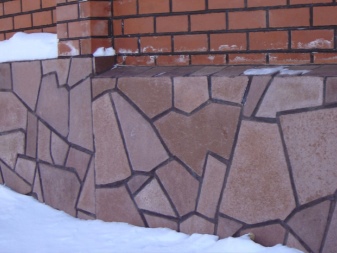
Where is it applied?
Due to its unique properties and original structure, lemesite has a wide range of uses. It is an excellent material for cladding vertical and horizontal surfaces. It is bought for facades and plinth cladding, used for decorative inserts when decorating walls, giving them attractiveness and originality.
It is a practical paving material. With its help, they carry out the laying of sidewalks and garden paths. Due to its unique properties, lemesite tiles do not soften in the heat. It retains its original strength characteristics.
Due to its special strength, lemezite is used in the production of load-bearing structures. For example, in the construction of columns, waterfall cascades, alpine slides, artificial ponds.
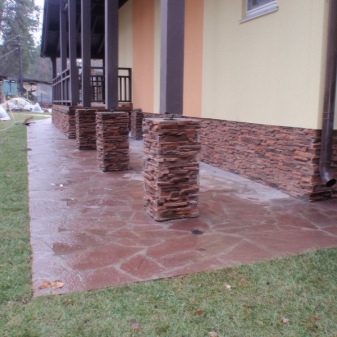
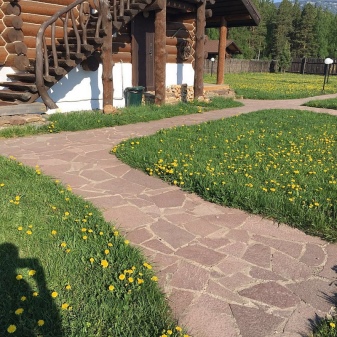
Lemezite is also used for finishing stairs. With its help, staircase steps are faced. It is bought for facing fireplace halls and grottoes.
Besides, it finds its application in landscape design and medicine. For example, on its basis, powders and pastes are produced that have a beneficial effect on the condition of the skin, hair, joints.
Due to the presence of organic compounds, it is used in cosmetology and agriculture. With its help, water is purified and disinfected. Mineral supplements for animals are made from it. This is the material of the highest and 1st class.
It is used to build fountains, paving stones, retaining walls. Entrance groups, fences, roads are trimmed with it. They create souvenirs and crafts (pendants, bracelets).
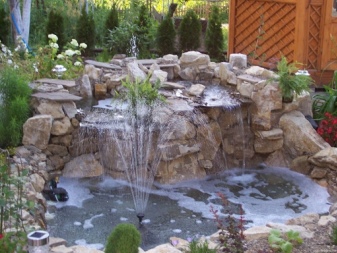
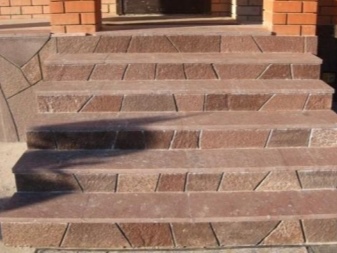
Description of species
The stone can be classified by color and type of processing. The color palette of the mineral includes about 60 different shades (from pinkish to green). Most often, a stone of burgundy and crimson tones is mined in nature. The colors of the mineral depend on the deposits.
Besides, the mineral is brownish, milky, gray-green, chocolate, purple. The differences between the tones are explained by the presence of different gaps between the fossilized algae filled with carbonate-clay cement of different colors. Stones of different colors may differ in hardness. The most durable type is considered to be greenish flagstone.
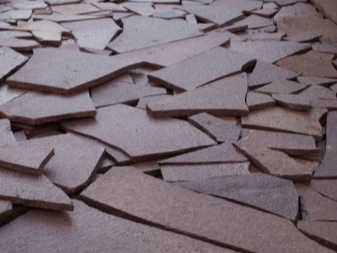

Stone for construction and finishing works can be supplied in natural and processed form. It can be sawn from 1, 2, 4 sides. This can be chipped tiles, paving stones, chips and even tumbling paving stones.
Tumbled flagstone is processed through a special drum. In the course of friction, corners and irregularities of the stone surface are smoothed out. Such material is artificially aged, giving it a unique texture. Tumbling significantly increases the scope of application of lemesite.
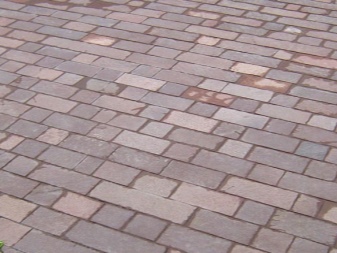
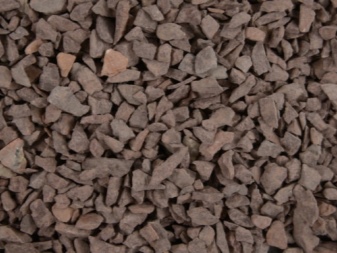
Comparison with other materials
Lemesite is a natural, natural adsorbent. It is better than other stones because it has a tiled structure. This simplifies its handling and increases the scope of its application. The mineral can be used without restrictions in all types of construction and finishing work.
Its deviations in thickness at the 1st cleavage are minimal. Stromatolite marbled limestone has no analogues in terms of durability and healing properties. It begins to deteriorate in 40-50 years from the moment of facing from the outside.
Interior decoration is more durable.
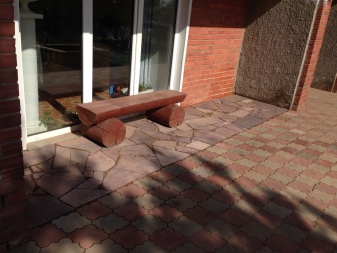

Lemezite is much stronger than other stones (for example, burnt sandstone). Sandstone serves less, although it is more expensive. As practice shows, the difference is obvious - such a coating can withstand a high load for much longer. It is practically eternal.
As for the comparison with zlatolite, it all depends on the type of work and thickness. This stone does not have a constant thickness along its length. Despite its strength, lemezite is inferior to goldolite in hardness and decorativeness (goldolite is stronger).
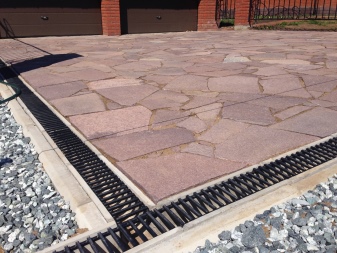
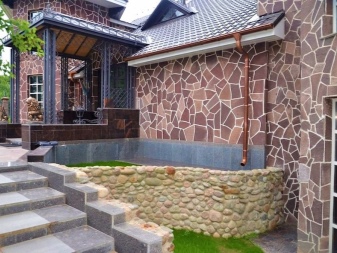
Laying methods
You can lay lemezite with your own hands on a different basis (sand, crushed stone, concrete). In this case, the laying can be sutured and seamless. We suggest that you familiarize yourself with the advice of professionals.
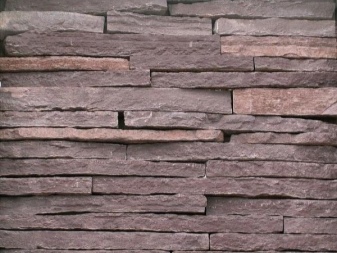
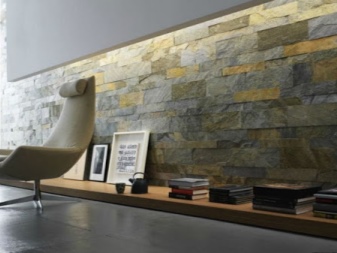
On the sand
Laying stone on sand is simple, practical, budget-friendly, and can be repaired. The disadvantage of this technology is the likelihood of stones shifting during operation and the limited weight load. For example, they resort to it when arranging garden paths. The laying scheme consists in performing a number of sequential steps:
- mark the site, drive in stakes on the sides, pull a rope along them;
- remove the top layer of soil (to a depth of 30 cm);
- compacting the bottom, laying geotextiles;
- a sand cushion is poured (layer 15 cm thick), the layer is leveled;
- curbs are installed on the sides;
- lay the tiles, sinking them into the sand with a rubber mallet;
- the gaps between the tiles are covered with sand or lawn grass seeds.
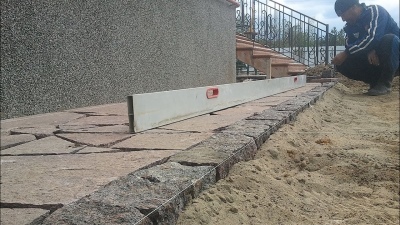
On concrete
Laying on concrete is carried out to pave a site under a heavy weight load (for example, a platform for a car near a house, a park area with active traffic).Such a coating is durable, resistant to external factors. However, it is costly and takes longer to pave. The scheme of work is as follows:
- mark the site, take out the soil, ram the bottom;
- carry out the arrangement of the formwork under the screed;
- fall asleep a layer of rubble, crushed stone or broken brick (with a layer of 20 cm);
- concrete is poured, the layer is leveled, dried for several days (moistened to prevent drying out);
- the flagstone is cleaned of dirt, a rough path is made;
- if necessary, the edges of the stones are trimmed with a grinder;
- glue is applied to the base and each tile;
- stones are pressed into the glue solution on a concrete base;
- the excess solution is immediately removed, the lining is dried, and, if necessary, washed with water.

On crushed stone
The technology for laying tiles on crushed stone is similar to the scheme for paving on sand. At the same time, the same preparation of the site is performed, the soil layer is taken out. The bottom is rammed, then covered with sand, followed by compaction. The difference lies in the use, in addition to sand, of crushed stone as a cushion for stone. The stone is laid using suture technology, after which the seams are filled with sand or fine gravel.
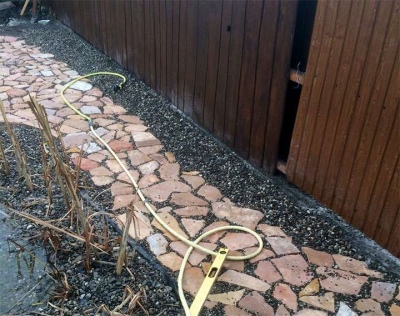
Description of lemesite and its scope in the video below.













The comment was sent successfully.